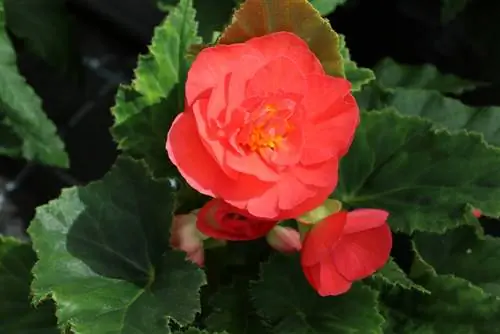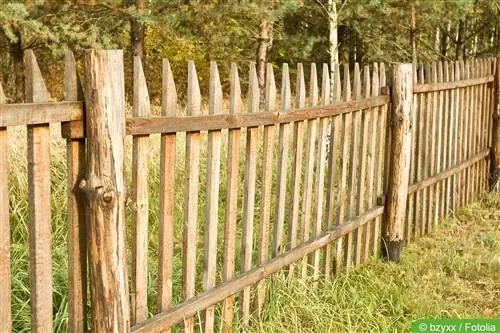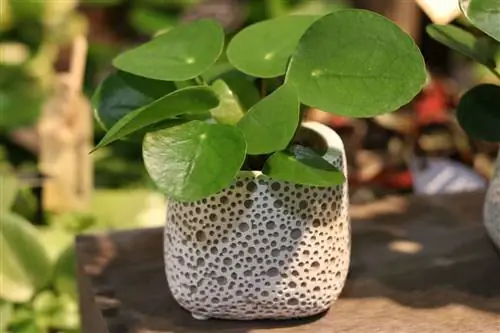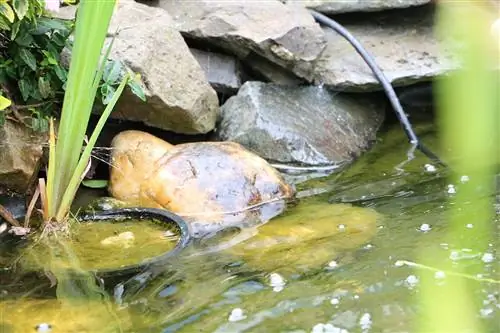- Author admin [email protected].
- Public 2023-12-17 03:39.
- Last modified 2025-01-24 12:45.
Begonia tubers are little miracles. Inside lurks a splendor of flowers that is second to none. They are only allowed outdoors from mid-May when there is no longer any threat of frost. But even then, the begonia's awakening progresses only slowly. It will be many weeks before flowering. The only thing that helps is an earlier start by working within your own four walls.
Seeds or rather tubers?
Bugonias can be grown from both tubers and seeds. But not both methods are equally suitable for the hobby gardener. Growing new plants from seeds is demanding and time-consuming. If you want to get the begonias to bloom early in summer, you have to start growing them in winter. But then the natural lighting conditions are not optimal. An artificial lighting system would have to be installed. It is much easier and cheaper to use tubers.
Note:
Begonia seeds are poor germinators. Usually only about half of it rises.
Where do you get tubers?
As soon as the days get longer in spring and the sun provides a little more warmth, flower lovers want to get started straight away. Accordingly, specialist shops are also well prepared for this. They will be offering tubers for sale as early as January. There you can browse as you please and choose suitable begonia varieties. However, tubers do not always have to be bought from stores. They can also be overwintered well. After the winter rest they sprout again. They can even be divided several times to get even more new plants.
What are the benefits of driving forward?
In order for the begonia to bloom earlier, its growth must begin earlier. However, the begonia tubers are sensitive to frost and should not be woken up from hibernation too early. Only after the Ice Saints can they be planted directly in the bed or in pots. How quickly they sprout also depends on the prevailing weather. But even under ideal conditions, the plant still needs several weeks before it can bloom. However, the later it blooms, the shorter the flowering phase. That's a shame because their flowers are so numerous and colorful. Driving the tubers provides an important time advantage. In bright and warm rooms, the plant can develop early so that it can bloom soon after planting.
The right time to advance

Bulbs that are supposed to sprout indoors also need suitable conditions. This includes, above all, sufficient heat and light. While temperature can be easily controlled indoors, natural light depends on the length of the day. The ideal time for driving also depends on this criterion. In any case, we have to wait for the dark winter. However, as soon as the days are longer and brighter, the forwarding can begin.
- possible from February at the earliest
- The month of March is ideal
- even April brings a noticeable lead in time
The optimal framework conditions
The begonias need a location where they can voluntarily wake up from their hibernation at an early stage. Warmth and light must be right, only then will new green life develop from the tuber.
- Temperature should be at least 10 degrees throughout
- 15 degrees is ideal
- Propulsion is also possible at room temperature
- Helpful is heat that comes from below
- z. B. From a radiator directly under the windowsill
- bright window seat provides enough light
- Partially shaded basement windows are also suitable
Note:
Begonias like warmth and light, but direct sunlight is not good for them. The ideal place for driving should therefore not face south.
Suitable vessels
Begonia tubers must be planted in the ground for cultivation. Suitable containers are required for this.
- Pots
- Bowls
- Crates
- and similar containers
- must be sufficiently large
- provided with drainage holes
Tip:
If you want the begonia to continue growing in a pot in the summer, you can use it straight away for pushing. This saves you having to repot later.
The right substrate
Commercial potting soil is sufficient for growing begonias. Adult begonia plants do not like waterlogging. This also applies to tubers that are freshly sprouting. That's why some sand should be added to the potting soil so that it becomes looser and more permeable. Excess water can quickly drain through the pot holes.
Tip:
Special potting soil can also be used for cultivation. However, it is a little more expensive than normal potting soil, although it does not provide any decisive advantage.
Instructions for driving forward

The individual steps for growing tuberous begonias are described in detail below. It is important to adhere to this precisely, because only if the advance is successful can the begonias start the outdoor season with flower buds.
- Procure a sufficient number of suitable pots, soil and begonia tubers in good time.
- Place the tubers in a bucket of lukewarm water where they can soak for about 24 hours.
- Place in a drainage layer at the bottom of the pots so that excess water can drain away easily. The drainage layer is particularly important if the begonias are to remain in these pots in summer.
- Fill the pots with soil. However, leave several centimeters free.
- Divide the tubers if you want multiple plants. Each section should have at least one drive eye.
- Place the tubers on the soil, with the curved side down. Give each tuber its own pot. Several tubers can only be placed in very large containers. These should be placed so that they are as far apart as possible.
- Cover the tubers halfway with soil. The upper half of the tuber, the one with the plate-like depression, must not be covered. The shoots, if they are already visible, must look out of the earth.
- Water the soil. Only add water to the soil, never to the tuber itself.
- Place the pots with the tubers in a suitable location. A temperature of around 15 degrees is ideal. If they are much warmer, the shoots become soft and the roots do not develop well.
- Never let the soil dry out completely. Spraying the soil with a bottle has proven effective. Twice a week is enough. Waterlogging should be avoided. The tuber must not get too wet either. If water collects on it, it can cause rot.
- Give the pots a brighter and warmer location as soon as the first light shoots appear. Now you can water a little more as the water requirement increases. However, waterlogging should still be avoided.
- Pinch off any flower buds that appear as early as March and April. This saves the plant energy for the main flowering period from May.
- Repot individual begonias if you find that they have become too crowded in their current pot.
- Harden off the plants. To do this, put the pots outside during the day as soon as the temperature climbs above 15 degrees. Start with a few hours and gradually increase the length of time. Choose a shady to semi-shady location without direct sunlight. Pay attention to the weather forecast and bring the young begonias in at night as a precaution so that they do not suffer from late night frosts.
Tip:
When planting, make sure that the tubers are positioned the right way up. The side with the visible “dent” must face up. This cavity must also not be covered with earth. To start, the pots can be covered with foil to keep the soil warm and moist. However, it should be removed regularly for ventilation. When the tuber shows its first shoots, the film can be removed completely.
Planting out sprouted tubers
The right time for planting the sprouted tubers is after the Ice Saints in mid-May. The temperatures prevailing during the day are not important as long as there is still a risk of sub-zero temperatures at night. So don't let sunny April days tempt you to act too early.
Overwinter tubers for the next season
If you want begonias to continue blooming next year, they must be protected from winter cold in good time. They are not winter hardy. Even with slight frost they can die. The tubers can overwinter well indoors and can be planted early in the spring. How to get new plants for free.
- Stop watering from September
- Allow the soil to dry around the tuber
- Dig up tubers after the leaves have withered
- Digging must be done before the first frost
- around November
- Let the tuber dry and remove soil
- Storage in an air-permeable box with dry sand
- optimal storage temperature is 5 to 7 degrees
- dry, dark and cool room is ideal winter quarters
Tip:
A begonia blooming in a pot can also overwinter on a windowsill, where it will continue to delight with its flowers.






